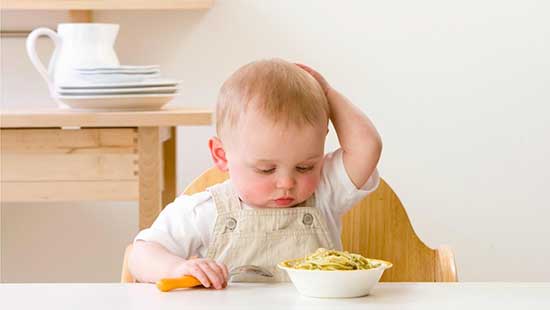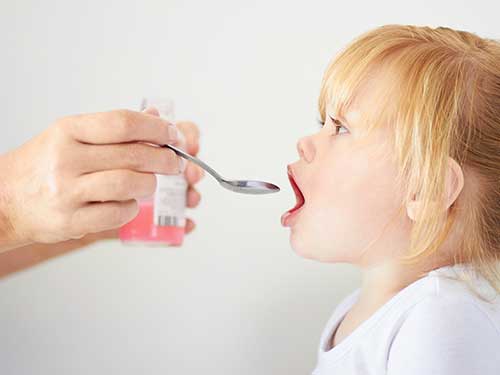
7 Ways to Encourage Healthy Eating in Children

It is not easy, but necessary, to accustom children to healthy eating while even adults struggle to resist the bombardment of useless, sugary, and additive-filled snacks implanted in our subconscious through television, the internet, and advertisements. The number of overweight and obese children is increasing day by day, and so is the likelihood of children developing various health problems due to poor nutrition in the coming years. Overweight children are at risk of developing diseases such as type 2 diabetes, which was previously considered an adult disease. The concessions you make to keep your child happy in the moment will harm them in the medium and long term. Most of you are aware of this, but you don't know how to instill healthy eating habits in them. Here are 7 tips to help you with this:
1. First, You Must Eat Healthy Yourself
Children pay more attention to actions than words or advice, and this is true for healthy eating as well. If you keep chips, candies, and soft drinks in the cupboards and frequently fry food, you cannot expect your child to eat beneficial things. You should set an example for them, avoid keeping harmful snacks at home, and at least not consume such things in front of your child all the time. However, we always recommend that you maintain a balanced diet. To spend healthy, long years with your child, you should also eat healthily, right?
2. Keep Healthy Foods Visible in the House
For example, always have yogurt, ayran, homemade fruit juice, and salad on the tables you prepare. Place a fruit bowl on the counter or the table in the living room. Do this even for food items your child doesn't usually prefer. Having healthy alternatives for when they want to snack at home will gradually lead them to at least some of these options.
3. Prepare Healthy and Visually Appealing Breakfast Tables
Breakfast is an important meal that prepares a person for the day. Include food items like cheese, butter, and organic honey on your breakfast tables, and have boiled eggs at least twice a week. You can also add sliced tomatoes, cucumbers, and peppers. If your child likes sandwiches, prepare a cheese and tomato sandwich for them. Be careful not to let them consume too much bread. Make shapes with olives and grapes on their bread, and make your omelets cute with additional food items. Get them colorful, cheerful serving sets and cups. This way, you can ensure they enjoy breakfast.
4. You Should Not Acclimate Them to Sugary Foods
No matter how attractive the taste and appearance of sugary processed foods are, you must pay attention to this. The fundamental thing you need to do is not to give too much space to these types of food at home. Remember that obesity and insulin resistance begin in childhood. If these issues are not detected early and necessary precautions are not taken, the risk of developing cardiovascular diseases and diabetes in adulthood increases.
5. Avoid Cooking Special Meals Just for Them
Your child has their own taste, and of course, you want to make things they like. However, it wouldn't be right to constantly fry potatoes just because they love fried potatoes, would it? Of course, prepare menus that they will particularly enjoy from time to time, but do not be too lenient in this regard. Instead of not making vegetable dishes because they don't like vegetables or preparing special things for them, make vegetable dishes in a way that they will enjoy, and present them attractively.
6. Eat at Least One Meal Together as a Family
You may not be able to do this for every meal of the day, but you should at least try to do it for one meal. Studies show that families who eat together tend to eat healthier. Additionally, this helps strengthen family communication.
7. Do Not Completely Ban Their Favorite Foods
Let's assume your child loves chocolate. Instead of completely banning them from eating chocolate, try to ensure they don't eat too much or experiment with alternative chocolate and chocolate dessert recipes that you can make at home and that they will also love. It is certainly easier to buy ready-made chocolate or pudding and put it in front of them. However, the recipes you prepare will not contain chemical additives like packaged foods, so they will not harm their health like those do.
Child Health and Safety Other Content in the Category

Child Health and Safety
Child Safety: Medications Should Be Stored Out of Reach of Children

Child Health and Safety
10 Effective Tips for Child Health

Child Health and Safety
8 Factors That Cause Babies to Cry

Child Health and Safety
Down Syndrome Diagnosis Methods
.jpg)
Child Health and Safety
When Do Babies Crawl

Child Health and Safety
Information About Teething Period in Babies

Child Health and Safety
Ways to Protect Children from the Coronavirus

Child Health and Safety
My Baby Refuses to Eat Solid Food

Child Health and Safety
What to Do to Instill Brushing Habits in Children

Child Health and Safety
Newborn Care

Child Health and Safety
How Much Water Should Babies Drink?

Child Health and Safety
10 Things to Do for a Healthy Pregnancy

Child Health and Safety
10 Ways to Prevent Sugar Consumption in Children

Child Health and Safety
Frequently Asked Questions About Cancer and Chemotherapy

Child Health and Safety
